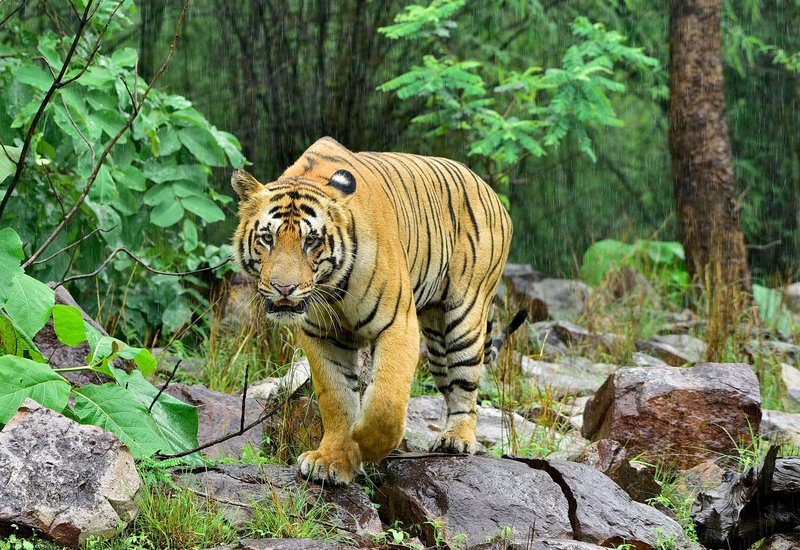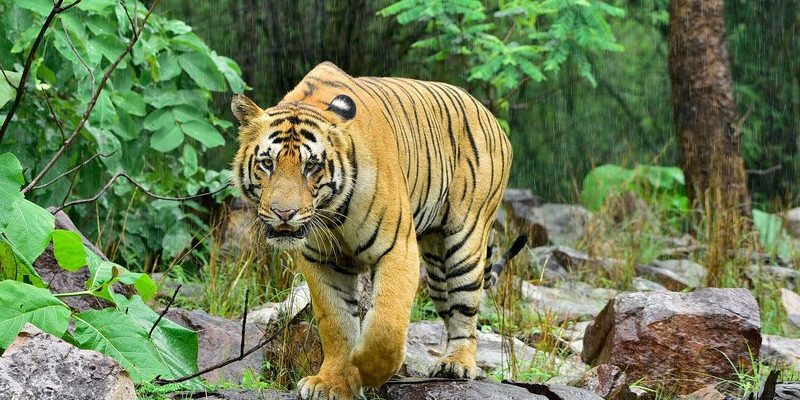
The presence of the Bengal tiger impacts the environment in many ways, affecting everything from the health of prey populations to the overall balance of the forest. So, let’s dive a little deeper and explore just how this remarkable big cat shapes its world.
What is an Ecosystem?
Before we delve into the specifics of the Bengal tiger, let’s clarify what an ecosystem is. Picture a bustling community made up of plants, animals, and microorganisms, all interacting with one another. This community relies on its members to function properly. Each species plays a specific role, much like a cast in a play. Some provide food, some help in decomposition, and others serve as predators.
In the case of the Bengal tiger, it’s considered an apex predator. This means it’s at the top of the food chain, not having any natural enemies once it reaches adulthood. Its presence is essential for controlling the populations of other animals and maintaining the balance in its habitat.
The Role of the Bengal Tiger as an Apex Predator
So, why is being an apex predator so important? When the Bengal tiger hunts, it helps regulate the populations of herbivores, like deer and wild boar. If there weren’t enough tigers around, these herbivore populations could explode, leading to overgrazing. This overgrazing can harm the vegetation, which then affects other animals that rely on those plants for food.
Think of it as a delicate seesaw. If one side becomes too heavy, the whole thing tips over. The Bengal tiger keeps this seesaw balanced, ensuring that no single species overwhelms the ecosystem.
Impact on Prey Populations
Bengal tigers primarily hunt large herbivores. Their hunting habits create a healthy balance in the ecosystem. For instance, when they thin out a deer population, it allows younger plants to grow. This regeneration of plants not only helps the forest thrive but also provides food and habitat for various other species.
Also, healthy prey populations mean healthier predators. Bengal tigers tend to target the sick, weak, or old animals, which helps ensure only the fittest herbivores survive and reproduce. This natural selection is crucial for the overall health of the species and the ecosystem.
Biodiversity and Habitat Maintenance
Biodiversity is like the spice in a recipe. The more diverse your ingredients, the richer the flavor. In ecosystems where Bengal tigers roam, you’ll find a greater variety of plants and animals. Tigers require vast territories, which means they often inhabit areas rich in biodiversity. Their presence encourages a range of species to thrive, creating a vibrant and healthy environment.
When tigers hunt, they indirectly support the growth of plant life. A well-maintained habitat flourishes with diverse flora, which in turn supports various insects, birds, and other animals. This creates a web of life where everything is interconnected.
The Importance of Forests
Forests are vital for multiple reasons. They act as carbon sinks, helping to mitigate climate change, and they support many communities both economically and ecologically. The Bengal tiger, as a key resident of these forests, plays a significant role in their health and sustainability.
When tigers roam their territories, they help maintain the forest’s structure and health. They create pathways as they move through, which can aid smaller animals in navigating the thick vegetation. This movement also disperses seeds, contributing to plant diversity.
Threats to the Bengal Tiger and Its Ecosystem
Despite their importance, Bengal tigers face numerous threats, primarily from humans. Habitat loss due to deforestation and urbanization is a significant concern. When forests are cut down, tigers lose their homes, leading to a decline in their populations and the overall health of their ecosystem.
Additionally, poaching is a serious threat. Tigers are hunted for their beautiful fur and body parts, which are often used in traditional medicine. This illegal activity not only endangers the tigers themselves but also disrupts the balance of their ecosystems.
Conservation Efforts
Various organizations and governments are putting efforts into tiger conservation. Protected areas or tiger reserves are established to provide safe habitats for these majestic animals. Local communities are also involved in conservation practices, realizing the value of healthy ecosystems.
Conservation isn’t just about saving the tigers; it’s about protecting entire ecosystems. When we work to save Bengal tigers, we also ensure a better future for countless other species and the environment as a whole.
The Future of the Bengal Tiger and Its Ecosystem
Looking ahead, the future of the Bengal tiger and its ecosystem is dependent on our actions today. Awareness is growing, but it needs to translate into more impactful actions. Education about the role of tigers in our ecosystems can inspire people to support conservation efforts.
Here’s the thing: saving Bengal tigers isn’t just about protecting a single species; it’s about nurturing a whole ecosystem that benefits us all. A healthy ecosystem can provide clean air, fresh water, and a rich diversity of life.
How You Can Help
Every one of us can play a role in tiger conservation. Here are some ways to help:
- Support wildlife conservation organizations.
- Spread awareness about the importance of tigers and biodiversity.
- Reduce your own environmental footprint and advocate for sustainable practices.
By taking small steps, we can make a big difference.
The Bengal tiger is much more than just a striking figure in the wild; its role in the ecosystem is fundamental. By acting as an apex predator, maintaining biodiversity, and contributing to forest health, these magnificent creatures play a vital role in the intricate web of life.
As the future of the Bengal tiger hangs in the balance, our responsibility to protect this species and its habitat becomes even clearer. Understanding their role in the ecosystem can help inspire action, ensuring that these beautiful animals continue to roam the jungles of India for generations to come.

